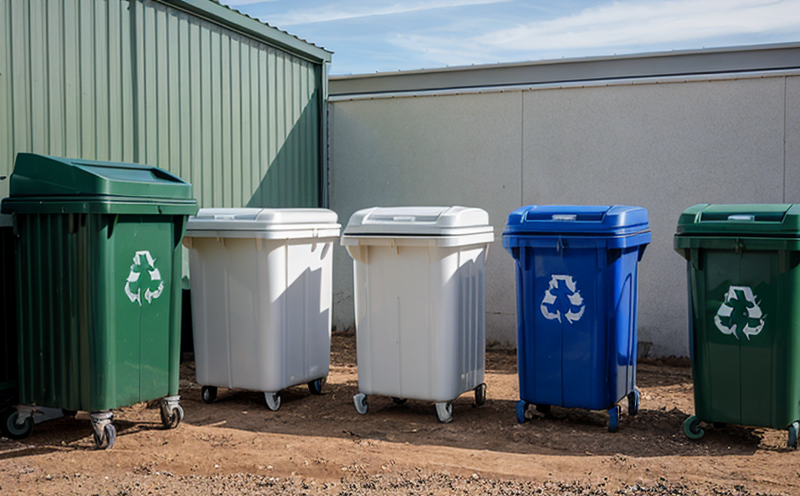ISO 14062 Eco-Design Guidelines Verification
The ISO 14062 series of standards provides a structured approach to eco-design and lifecycle assessment (LCA) for products. This service focuses on verifying compliance with the ISO 14062 guidelines, which are designed to support companies in integrating environmental considerations into their product design processes. Compliance ensures that products are sustainable throughout their lifecycle, from raw material extraction through production, use, and disposal.
The eco-design process aims to minimize the environmental impact of a product by addressing key areas such as energy efficiency, resource conservation, waste minimization, and recycling potential. By adhering to these guidelines, manufacturers can enhance their products' environmental performance while ensuring regulatory compliance and gaining a competitive edge in the market.
The ISO 14062 eco-design verification process involves several steps:
- Review of product specifications and design documentation for adherence to eco-design principles.
- Evaluation of materials used, including their lifecycle impacts and recyclability.
- Assessment of energy consumption during production processes.
- Analysis of end-of-life options, including recycling and waste management strategies.
The verification process ensures that all aspects of the product's lifecycle are considered, from the initial stages of design to final disposal. This holistic approach helps companies meet regulatory requirements while also enhancing their brand reputation through sustainable practices.
Our expertise in this area allows us to provide comprehensive support for clients seeking to comply with ISO 14062 guidelines. We offer tailored services that help businesses optimize product sustainability and reduce environmental footprints. Our team of experienced professionals ensures accurate and reliable verification, providing valuable insights into areas where improvements can be made.
By engaging our services, you gain access to cutting-edge tools and methodologies that align with international best practices. This enables your organization to stay ahead in the ever-evolving landscape of sustainability standards.
Applied Standards
The ISO 14062 series consists of multiple parts, each addressing different aspects of eco-design:
- ISO 14062:1 - General Requirements for Environmental Management and Product Design.
- ISO 14062:2 - Guidelines for Energy Efficiency in Product Design.
- ISO 14062:3 - Guidelines for Resource Conservation and Waste Minimization in Product Design.
- ISO 14062:4 - Guidelines for Recycling Potential in Product Design.
The specific parts of the ISO 14062 series that are relevant to our service include:
- ISO 14062:1: Establishes a framework for integrating environmental considerations into product design and development.
- ISO 14062:3: Provides guidelines for reducing resource consumption and minimizing waste throughout the product lifecycle.
- ISO 14062:4: Focuses on enhancing recycling potential by considering design factors that facilitate end-of-life recovery.
The application of these standards ensures that products are designed with sustainability in mind, promoting a circular economy and reducing environmental impacts. Compliance with ISO 14062 helps organizations meet regulatory requirements while enhancing their reputation as environmentally responsible entities.
Customer Impact and Satisfaction
Compliance with the ISO 14062 eco-design guidelines offers numerous benefits to customers, including:
- Enhanced Product Sustainability: Products designed in accordance with these guidelines are more sustainable throughout their lifecycle.
- Regulatory Compliance: Ensures adherence to relevant environmental regulations and standards.
- Improved Brand Reputation: Demonstrating commitment to sustainability can significantly enhance a company's public image.
- Cost Savings: Efficient use of resources and energy can lead to reduced operational costs.
- Market Differentiation: Sustainable products often appeal more to environmentally conscious consumers, providing a competitive advantage.
- Increased Customer Trust: Compliance with international standards builds trust among customers who value environmental responsibility.
Our clients have reported increased satisfaction and improved product performance following successful verification against ISO 14062 guidelines. By prioritizing sustainability, they not only meet regulatory requirements but also contribute positively to the environment while enhancing their market position.
Competitive Advantage and Market Impact
Compliance with ISO 14062 eco-design guidelines provides significant competitive advantages, particularly in today's environmentally conscious marketplace. Here are some key points that highlight the market impact:
- Innovation: Adhering to these guidelines encourages innovation by identifying new ways to reduce environmental impacts. Consumer Preference: Eco-friendly products resonate well with consumers, influencing purchasing decisions.
- Supply Chain Synergy: By integrating sustainability into product design, companies can align their supply chains with broader eco-friendly goals.
- Cost Efficiency: Efficient use of resources and energy translates to cost savings across the entire lifecycle of the product.
- Market Differentiation: Sustainable products stand out in crowded markets, attracting environmentally conscious consumers.
- Long-Term Viability: Sustainable design ensures that products remain relevant and viable for future generations.
The global trend towards sustainability is accelerating, and compliance with ISO 14062 can help organizations stay ahead of this trend. By embedding environmental considerations into product development, companies position themselves as leaders in the green economy.





